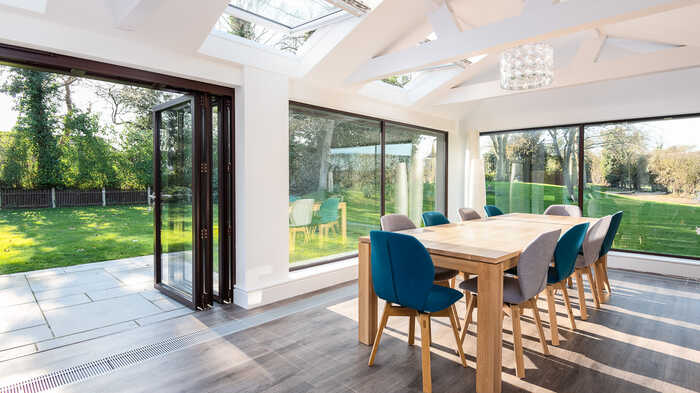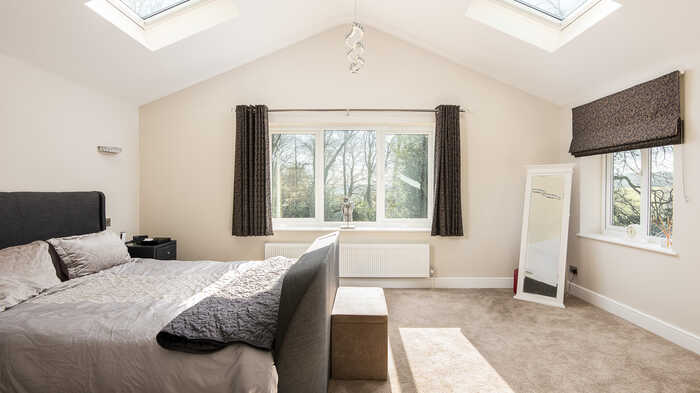What Is Architectural Design?
At its foundation, architectural design is the process of shaping physical spaces to make them both functional and visually appealing.
To expand, it’s a discipline that blends creativity with technical knowledge to ensure that buildings meet the needs of their users — whether it’s a new build home, office, or public space, architectural design influences every stage of a project, from the initial concept to the finished structure. Architectural design aims to unify buildings with their environment while providing practical solutions that improve everyday life for the user.

The role of architectural design in shaping the built environment
Architectural design plays a critical role in shaping the spaces where people live, work, and interact. A well-designed building improves both utility and comfort, creating an environment that supports human activity. It also takes into account factors such as climate, geography, and surrounding architecture to ensure that the building fits within its context. Thoughtful design can transform how a space is used and, crucially, how it feels.
The relationship between design and space planning
Architectural design and space planning are closely linked in every construction project. While design focuses on the building’s overall vision and form, space planning deals with the arrangement of interior areas to optimise usability and comfort. Both are essential to creating a building that feels cohesive and functions well.
Architectural designers work to ensure that the interior layout of a building flows naturally and that each space is used effectively. Careful space planning can make a small area feel larger or ensure that a busy workspace functions smoothly. By balancing these elements, architectural designers create environments that serve the needs of their users while maintaining a strong visual identity.

The process of architectural design
The architectural design process typically begins with a consultation, where the client’s goals, needs, and budget are discussed. This stage often includes hepling with planning applications, assessing the site, and reviewing any building restrictions or regulations. The architectural designer then develops initial concepts, sketching out ideas for the building’s form and layout.
Once the concept is approved, the next stage involves creating detailed designs and technical drawings. This phase includes selecting materials and ensuring the design complies with local building regulations. Throughout the process, the architectural designer collaborates with other professionals, such as engineers and contractors, to ensure the project remains feasible, safe, and aligned with the client’s vision.
The influence of architectural design on lifestyle
Architectural design has a significant impact on the way we live, shaping our homes, workplaces, and public spaces. Well-designed buildings enhance daily life by making spaces more comfortable, functional, and enjoyable to use. Architectural designers consider how light enters a room, how people move through a space, and how a building’s layout supports its intended purpose.
A well-designed home layout can make daily tasks easier and more efficient, while an open-plan office can environments geared towards collaboration and communication. By creating designs that suit the needs of their users, architectural designers build spaces that support health, productivity, and well-being.

Sustainability in architectural design
Sustainability has become a central focus of modern architectural design. Architectural designers are increasingly incorporating eco-friendly materials, energy-efficient systems, and sustainable building practices into their projects. This includes the use of renewable energy sources, such as solar power, and passive design techniques, like natural ventilation, to reduce a building’s environmental footprint.
Sustainable architecture helps protect the environment while creating healthier, more cost-effective spaces for occupants. By integrating green technologies and sustainable practices, architectural designers are helping to build a future where buildings work in harmony with nature, reducing energy consumption and minimising waste.
How can we help?
Architectural design is a dynamic field that blends creativity and utility. It shapes the spaces where we live and work, influencing everything from our daily routines to our long-term well-being. At Maidenhead Planning, we specialise in turning your vision of a dream home into reality.
Whether you're planning a home extension, renovation, or a new build, we’re here to guide you through the entire process. get in touch with Maidenhead Planning today or book a free video consultation and start your journey towards creating a space that truly reflects your needs and aspirations.
Posted by Wouter De Jager on September 30th 2024

